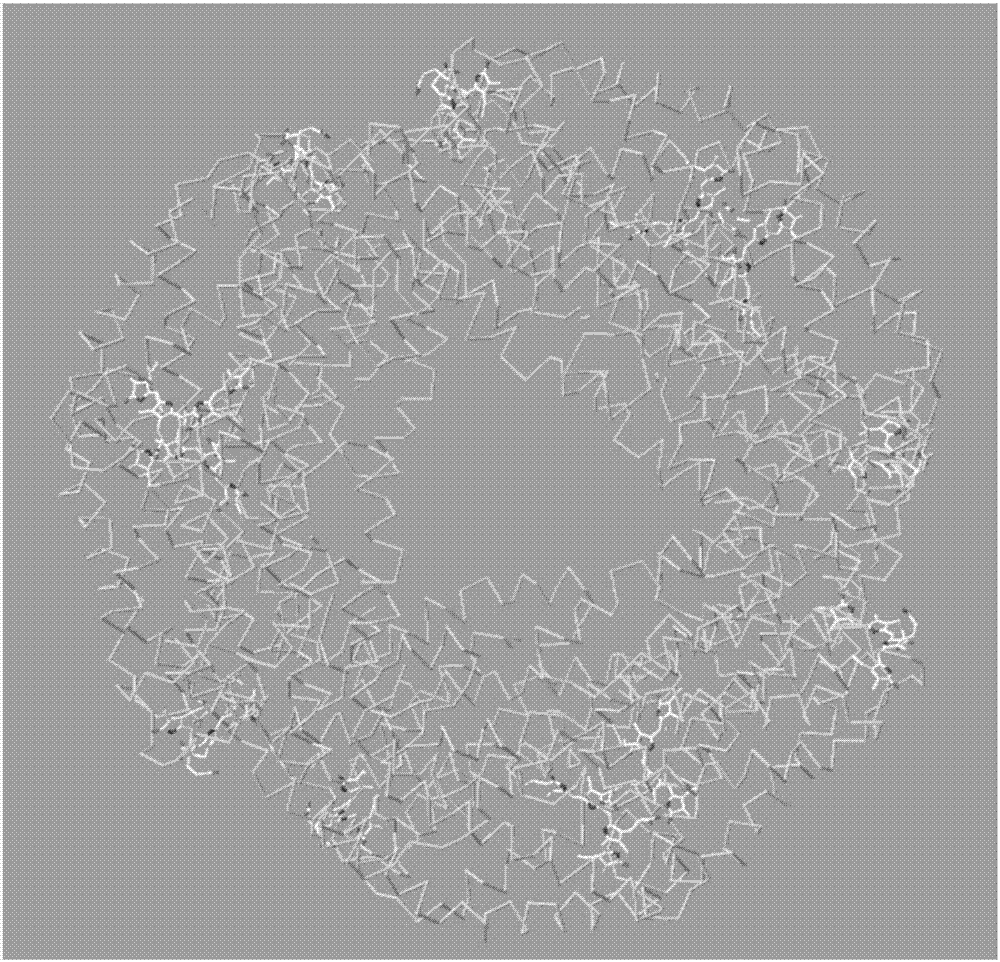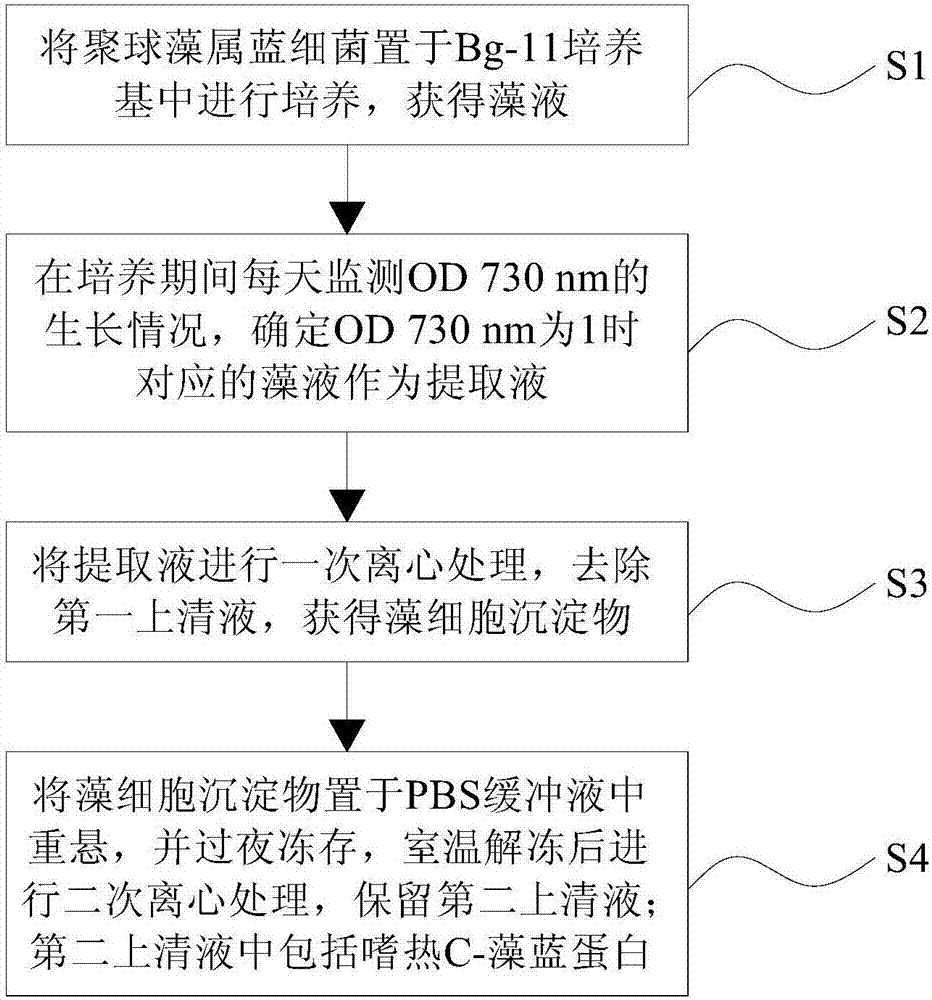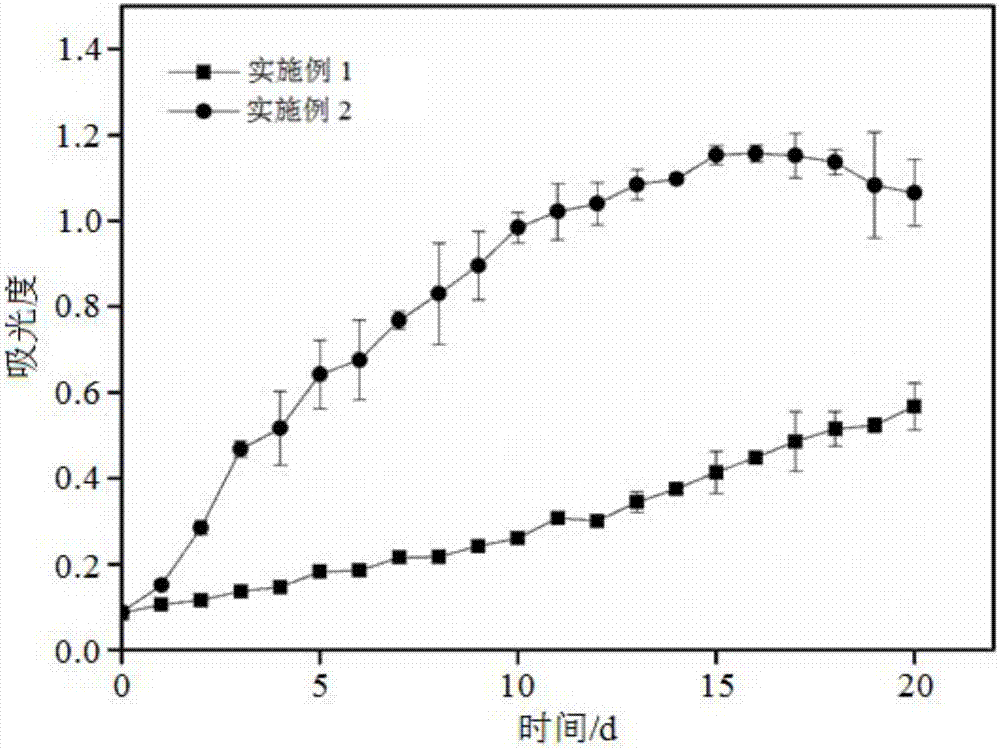Thermophilic C-phycocyanin and method for extracting thermophilic C-phycocyanin from synechococcus cyanobacteria
A phycocyanin and cyanobacteria technology, applied in the field of thermophilic C-phycocyanin, can solve problems such as low temperature tolerance, and achieve the effect of significant application advantages
- Summary
- Abstract
- Description
- Claims
- Application Information
AI Technical Summary
Problems solved by technology
Method used
Image
Examples
Embodiment 1
[0031] This embodiment provides a thermophilic C-phycocyanin, which has the amino acid sequence shown in Sequence 1 and figure 1 in the structure.
[0032] It is worth noting that the thermophilic C-phycocyanin of this example has a significantly different amino acid sequence from the thermophilic phycocyanin of P72509 queried by NCBI (ie, the National Center for Biotechnology Information, USA), which is especially shown in Amino acids at the 6 characteristic positions at positions 21, 28, 33, 37, 42 and 145; in the thermophilic C-phycocyanin of this embodiment, the amino acids at the above 6 characteristic positions correspond to asparagine (Asn, N), aspartic acid (Asp, D), arginine (Arg, R), serine (Ser, S), arginine (Arg, R) and glutamine (Gln, Q), while in P72509 In the thermophilic phycocyanin, the amino acids at the above six characteristic positions correspond to serine (Ser, S), phenylalanine (Phe, F), glutamine (Gln, Q), glycine (Gly, G) , lysine (Lys, K) and aspart...
Embodiment 2
[0066] In the description of Embodiment 2, the similarities with Embodiment 1 will not be repeated here, and only the differences with Embodiment 1 will be described. The difference between embodiment 2 and embodiment 1 is that in step S1, Synechococcus cyanobacteria are placed in a mixed solution of Bg-11 medium and water-soluble bicarbonate solution for cultivation; in other words, In Example 2, the mixed solution of Bg-11 medium and water-soluble bicarbonate solution is used as the compound medium; the rest refer to the description in Example 1 to obtain the amino acid sequence as shown in Sequence 1 and figure 1 The structure of thermophilic C-phycocyanin.
[0067] Preferably, the concentration of the water-soluble bicarbonate solution is 0.1mol L -1 ~0.3mol·L -1 ; Preferably 0.1mol L in the present embodiment -1 Sodium bicarbonate solution.
[0068] During the extraction process of the thermophilic C-phycocyanin of the present embodiment, the change of the absorbance ...
PUM
 Login to View More
Login to View More Abstract
Description
Claims
Application Information
 Login to View More
Login to View More - R&D
- Intellectual Property
- Life Sciences
- Materials
- Tech Scout
- Unparalleled Data Quality
- Higher Quality Content
- 60% Fewer Hallucinations
Browse by: Latest US Patents, China's latest patents, Technical Efficacy Thesaurus, Application Domain, Technology Topic, Popular Technical Reports.
© 2025 PatSnap. All rights reserved.Legal|Privacy policy|Modern Slavery Act Transparency Statement|Sitemap|About US| Contact US: help@patsnap.com



